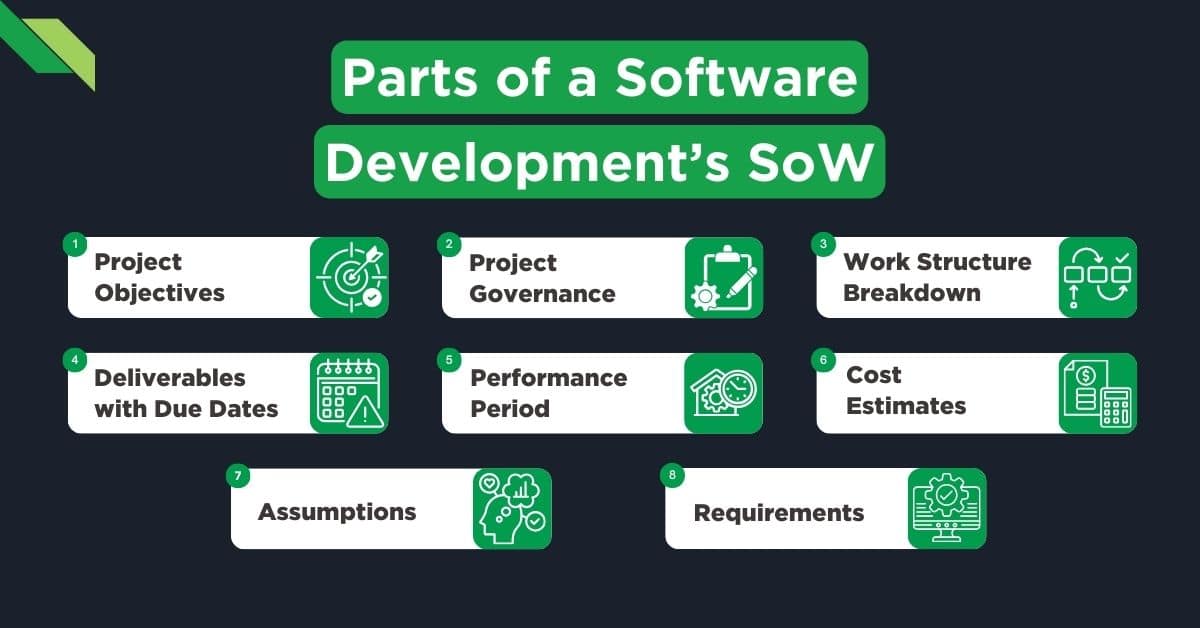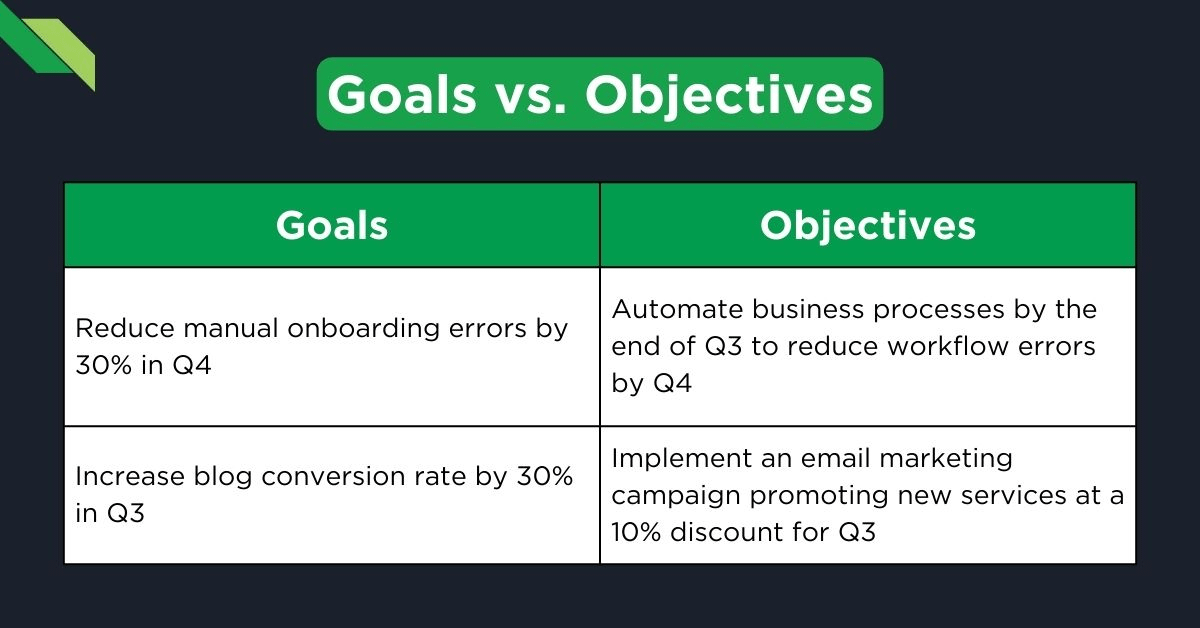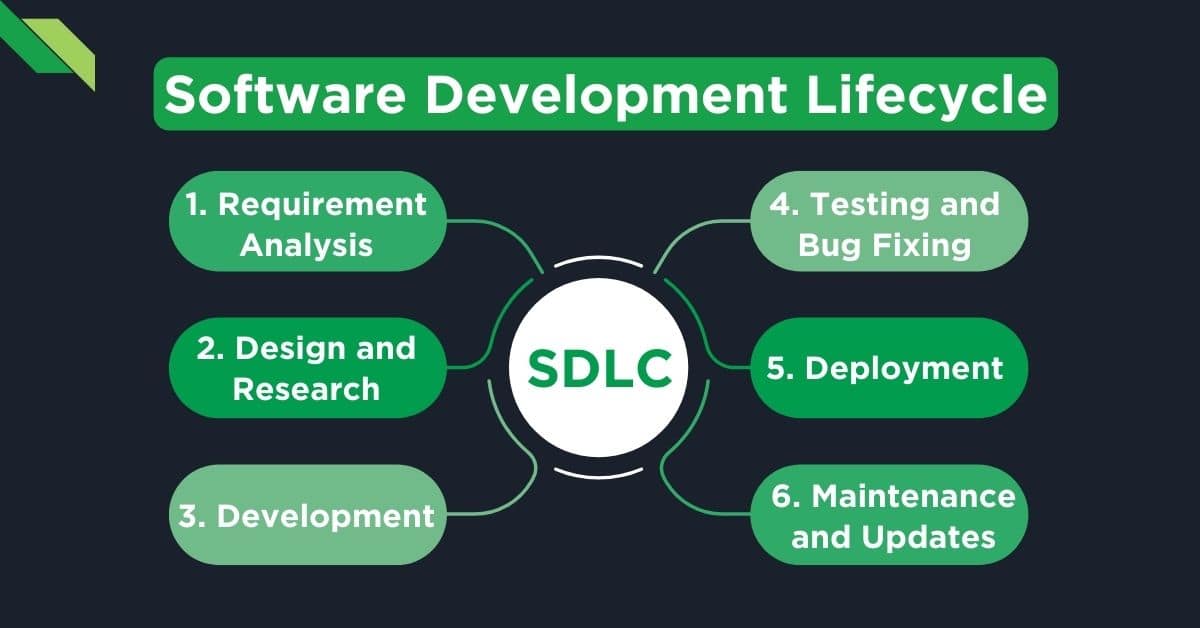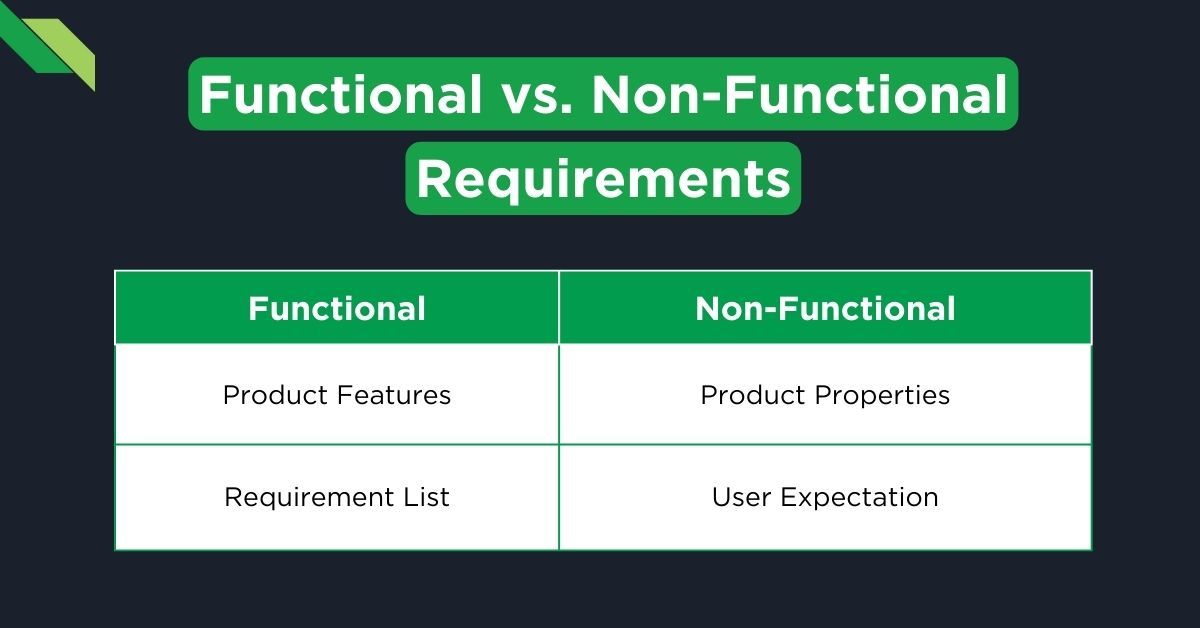Last Updated on 2025-10-06
Are IT projects challenging to handle?
According to a McKinsey and the University of Oxford report, an average of 45% of IT projects go over budget while 56% deliver less value.
That is why you need a comprehensive Statement of Work (SoW). This document helps you avoid project pitfalls in software development.
But what is a SoW? How do you write one?
Learn about software development SoWs and get a template for your next project. By the end, you’ll know how to create a successful software development SoW.
Crafting a Statement of Work for Software Development
A clear Statement of Work is crucial for a software project’s success. It defines responsibilities and helps avoid delays and reduced profitability. On the other hand, an unclear Statement of Work can lead to extra work and trouble down the line.
Importance of A Detailed SoW in Software Development
The Statement of Work, or a Statement of Work Template, cues each participant in the software development process when it’s their turn to move. It’s a comprehensive document that lays out the rhythm and steps of a project—the what, who, when, and how.
It prevents misunderstandings and disputes by defining project scope, deliverables, schedule, and quality standards from the start.
Navigating the Nuances of Software Project SoW Documents
A Statement of Work for software development is akin to reading a map before embarking on a journey. The key is to chart the path clearly, leaving no stone unturned.
Your SoW designed for software development helps you prepare for the expected and unexpected. By understanding the intricacies of your SoW, you can ensure your project journey is well-guided and free from unwelcome detours or obstacles.
Here’s what a Software SoW contract should contain:

- Project Objectives: Explain the reason for undertaking the project and its intended outcomes.
- Project Governance: States a clear description of who is authorized to perform specific tasks and make decisions throughout the project life cycle.
- Work Structure Breakdown: Itemizes the project into manageable tasks, including their respective phases and how they will be approached.
- Deliverables: Determines what will be produced and when they are due.
- Period of Performance: Outlines when the project will be completed, including start and end dates and milestones to track progress.
- Estimate: Defines a comprehensive estimate of the project’s cost and a payment schedule.
- Assumptions: Outlines what is included and excluded in the project scope, including acceptance criteria.
- Work Requirements: Specifies additional requirements, such as project management tools or functional requirements for software development projects.
Understanding the Essentials of a Software SoW
An effective Software Statement of Work must include crucial components to precisely comprehend the project’s scope, requirements, and expectations.
Defining the Project Scope with Precision
Defining the scope precisely is the cornerstone of any successful software development project. It’s like deciding the boundaries of the playground—the clearer the limits, the better you play the game.
- Detail the software’s functionalities and features
- Specify any deliverables, including documentation and training materials
- Identify project exclusions to manage expectations
A precisely defined project scope is crucial for success. It prevents scope creep, sets clear expectations, and provides a solid foundation for planning and execution.
Setting Realistic and Attainable Deliverables
Setting realistic and attainable deliverables that respect the budget deliverables timeline ensures that your software development project stays on track. Everyone also knows what success looks like and when it’s expected.
- Align deliverables with the project’s capabilities and deadlines
- Use specific, quantifiable criteria to describe each deliverable
- Provide a timeline for when each part of the project will be completed
Setting realistic and achievable goals is important to avoid project delays, increased costs, and stakeholder dissatisfaction.
7 Expert Tips for a Flawless SoW for Software Development
Create a comprehensive and clear SoW for software development that sets the foundation for a successful project outcome.
Effective communication and collaboration between all stakeholders are essential throughout the project lifecycle. This ensures alignment and helps mitigate risks.
1. Align Outcomes with Business Objectives
It’s critical that the software you’re building meets technical specifications and supports the business’s overarching goals. This way, the final product contributes to the company’s success and delivers real value.
But how to do it?
- Clearly link project goals with business strategies
- Reflect on how the software will solve specific business problems or capture opportunities
- Confirm that KPIs are established to measure the project’s impact on business objectives

By setting clear goals and objectives in the SoW for software development, you provide a roadmap for the project team to follow. And ensure that everyone is working towards a common purpose. This increases the likelihood of project success and helps to manage expectations throughout the project.
2. Break Down the Software Development Process into Phases
Structuring the software development lifecycle into clear-cut stages helps maintain focus, manage resources effectively, and facilitate easier progress tracking. This ensures continuous momentum without overwhelming the team or diluting quality.
- Define and separate stages such as planning, design, development, testing, and deployment
- Assign tasks, deadlines, and responsibilities for each phase
- Develop milestones to celebrate the completion of each phase, fostering team motivation and stakeholder confidence

The Software Development Lifecycle:
- Requirement Analysis: Analyze requirements, collect details, understand their purpose, discuss fulfillment, and decide whether to buy or build. Also, plan how to test each requirement. Testers can add value to this process.
- Design and Research: In the design phase of software development, the team creates a plan to meet the requirements. Consider factors like risks, technology, budget, and time. This phase specifies what the software needs to do, including components, user stories, and design approach.
- Development: After completing the design requirements, developers translate the software design into code. The team creates interfaces, GUI & data, reviews each other’s code, and deploys the product to a project-specific environment. This process is iterated until all requirements are achieved.
- Testing and Bug Fixing: In the SDLC testing phase, modules are tested to ensure defect-free software. Testers identify issues, compare output with requirements, and apply structured procedures like test scripts.
- Deployment: After testing the software and ensuring it’s defects-free, it’s time to deploy it for customer use. This involves checking the User Acceptance Tests and making the software live in production.
- Maintenance and Updates: After the software launch, maintenance starts, which involves improvements and adjustments. Notify developers of any problems that require fixing, whether a hotfix or a fix for the next version. At some point, the software will need to be reengineered.
Different software development life cycle approaches have been introduced to cater to unique projects. The most widely used SDLC types are Waterfall, V-Model, Prototype, Agile, and Spiral. These models consist of different phases that should be undergone when developing software.
3. Specify Clear Acceptance Criteria
Clear criteria form the basis of objective assessment. It allows clients and developers to agree on what constitutes a finished product. This prevents misunderstandings and ensures the software meets the required standards before deployment.
- Be Specific: Use clear and specific language to define the deliverables or objectives. Avoid using ambiguous language.
- Quantifiable Measures: Include quantifiable measures for success whenever possible. For instance, instead of “quickly loading website,” state “website should load within 3 seconds.”
- Functional Requirements: List the functions or features required in the final output, such as user authentication, search functionality, etc.
- Performance Requirements: Specify performance standards (e.g., website uptime, response time for customer support) that must be achieved.
- Compatibility and Compliance: Specify any compatibility requirements with existing systems or standards to which the deliverable must adhere.
- Testing Criteria: Provide details on how you will test and validate the deliverable, including the criteria, test cases, scenarios, or benchmarks.
- acceptance testing: Outline the acceptance testing process, specifying the test conductors, evaluation criteria, and protocol for handling discrepancies.
- Documentation: List the required documentation or reports that must accompany the deliverable.
- Revision and Correction Process: Clarify the process for making revisions or corrections if the deliverable does not meet the acceptance criteria initially.
- Sign-off Procedure: Define the procedure for obtaining sign-off from the client once the deliverable has been accepted.
- Dependencies and Assumptions: Clearly state any dependencies or assumptions that are inherent in the acceptance criteria.
- Deadlines and Milestones: Ensure acceptance criteria are aligned with project deadlines and milestones for timely delivery and progress tracking.
- Review and Approval Process: Outline the process for reviewing and approving the acceptance criteria to ensure that both parties agree before work begins.
When specifying clear acceptance criteria in a Statement of Work (SoW), it’s crucial to ensure that the client and the service provider have a mutual understanding of what constitutes successful completion of the project or deliverables.
4. Establish Transparent Communication Channels
Establishing transparent communication channels and strategies minimizes errors, aligns expectations, and fosters collaboration. To achieve this, you must set ground rules for how, when, and where project-related discussions occur.
- Designate platforms for daily communication, file sharing, and meeting coordination.
- Schedule regular check-ins and milestones updates to keep everyone on the same page.
- Implement an approval process for deliverables to streamline decision-making.
5. Identify Risks and Mitigation Strategies Early On
Identifying risks and mitigation strategies early on is a good move—it’s not a matter of if challenges will arise, but when. You can react swiftly and effectively by recognizing potential stumbling blocks upfront and planning for them. It minimizes any impact on your project’s timeline or success. It’s all about being proactive rather than reactive.
Here are ten common risks in SoW for software development, along with mitigation strategies.
| Category | Risk | Mitigation |
| Ambiguous Requirements | Incomplete or ambiguous requirements can lead to misunderstandings and rework, causing delays and budget overruns. | Conduct thorough requirement-gathering sessions with stakeholders, involve subject matter experts, and document requirements clearly. Implement a change control process to manage requirement changes |
| Incomplete Scope Definition | Important project deliverables or tasks are not adequately defined in the SoW. | Ensure the SoW includes a comprehensive breakdown of the project scope, including deliverables, milestones, and acceptance criteria. Conduct a thorough review to identify gaps or omissions in the scope definition. |
| Unclear Roles and Responsibilities | Lack of clarity regarding the roles and responsibilities of the client, vendor, and other stakeholders. | Clearly define the responsibilities of each party in the SoW. Specify roles related to project management, development, testing, and support. Establish communication channels and escalation procedures for resolving issues. |
| Budget Overruns | Exceeding the allocated budget due to unforeseen expenses or scope changes. | Conduct thorough cost estimation and budget planning during the SoW development phase. Include contingency reserves to accommodate unexpected costs. Implement a change management process to assess the impact of scope changes on the budget. |
| Schedule Delays | Project milestones or deadlines are not met, leading to schedule delays. | Develop a realistic project schedule with achievable milestones. Identify critical path tasks and allocate resources accordingly. Monitor progress regularly and take proactive measures to address any deviations from the schedule. |
| Legal and Compliance Risks | Failure to comply with legal or regulatory requirements, leading to legal disputes or penalties. | Conduct thorough requirement-gathering sessions with stakeholders, involve subject matter experts, and document requirements clearly. Implement a change control process to manage requirement changes. |
| Dependency Risks | Dependencies on external factors such as third-party APIs, tools, or services. | Identify critical dependencies early in the project and assess their impact on project delivery. Include provisions in the SoW to address dependency risks, such as alternative solutions or contingency plans. |
| Communication Breakdown | Ineffective communication between project stakeholders leads to misunderstandings or delays. | Establish clear communication channels and protocols in the SoW. Define communication expectations, including frequency of updates, reporting mechanisms, and escalation procedures. Encourage regular communication and collaboration among all stakeholders. |
| Quality Assurance and Testing Risks | Inadequate testing and quality assurance processes result in software defects or poor quality. | Include clauses in the SoW that address legal and compliance considerations, such as intellectual property rights, data protection, and confidentiality. Ensure all parties know their obligations and responsibilities under applicable laws and regulations. |
| Scope Change Management | Changes to project scope without proper evaluation or documentation. | Implement a change management process outlined in the SoW. Define how change requests will be submitted, evaluated, and approved. Before implementation, assess the impact of scope changes on budget, schedule, and resource allocation. |
By systematically identifying risks and implementing mitigation strategies early in the software development process, you can proactively address potential challenges and increase the likelihood of project success.
6. Factor in Non-Functional Requirements
Factoring in non-functional requirements is akin to fine-tuning a musical instrument—it’s not just about playing the right notes. It’s about the quality of the sound. These requirements, often seen as performance indicators, shape how the software operates rather than what it does, ensuring the system is secure, reliable, and usable.
Neglecting these aspects can result in software that meets all the functional targets but fails in real-world use.

- Incorporate security measures for data protection, especially if dealing with personal identifiable information (PII)
- Ensure the software is scalable to handle increased loads, accounting for both user traffic and data
- Address compatibility, including hardware and software requirements, to prevent integration issues
- Guarantee uptime and establish acceptable downtime, reflecting the need for 24/7 access if necessary
- Adhere to usability standards, including user experience (UX) design principles and ADA accessibility guidelines
7. Determine the Payment Model and Schedule
Aligning payment terms with project milestones balances your budget with the project’s progress. Ensure that your chosen model reflects the nature of the work and the relationship with your vendor or client for a smooth financial transaction process.
| Category | Fixed-Price Contract | Dedicated Development Team Model |
| Characteristics | Perfect if the scope is clear and deadlines are tight. Vendor takes full responsibility for deliverability Payments are made according to a pre-determined schedule, often tied to milestones | Suited for long-term or complex projects with evolving scopesAllows for modifications and adjustments throughout development Payments are based on actual working hours or agreed periodic retainers |
| Pros | Predictable budgeting and cash flow Clear financial deliverables and deadlinesLower financial risk for clients | Greater flexibility to adjust features and requirements Client participates in team management, leading to stronger collaboration More transparent view of work and hours spent |
| Cons | Less flexibility to adapt the scope Higher initial vendor risk can lead to higher cost | Projects where scope may change, and client engagement is high |
| Best For | Short-term or small projects with well-defined requirements | Projects where scope may change and client engagement is high |
Remember, the ultimate goal is to balance your financial risk with the need for project flexibility. Whatever payment model you choose, detail it comprehensively in your SoW to avoid any unpleasant surprises later.
Avoiding Common Pitfalls When Writing A Software SoW
When writing a software Statement of Work (SoW), avoiding common pitfalls is essential to ensure clarity, manage expectations, and mitigate risks.
1. Steering Clear of Vague Language
Steering clear of vague language in your Statement of Work (SoW) eliminates confusion and conflict. Clear, concise language removes room for personal interpretation. This ensures that all parties share a common understanding of the project expectations.
- Avoid broad terms and jargon that can be misinterpreted; opt for simple, direct language.
- Be specific about technical standards, project methodologies, and deliverables to minimize assumptions.
- Include definitions for any terms that might be unclear or subject to interpretation.
2. Preparing for the Unexpected: Contingency Plans
Prepare for the unexpected with contingency plans. They serve as a safety net, ensuring your software development project can continue smoothly despite unforeseen events.
Contingency planning involves foresight and the flexibility to adapt to challenges without derailing your entire project.
- Identify key project risks and develop backup strategies.
- Outline procedures for common issues such as scope changes, delays, or technology malfunctions.
- Set aside a portion of your budget as a contingency fund for unexpected costs.
Refining Your Statement of Work for Software Development
Refining your Statement of Work (SoW) for software development is crucial to ensure clarity, alignment, and successful project execution.
Continuous Improvement through Feedback
Actively seek input from all stakeholders at each stage of development. This helps illuminate areas for enhancement, ensuring the end product closely aligns with user needs and expectations.
- Incorporate regular feedback loops with clients, end-users, and team members
- Utilize reviews at the end of each development phase to refine processes and outputs
- Embrace changes that arise from feedback, understanding it as an opportunity for growth
Leveraging Templates and Professional Insight
Creating your Statement of Work (SoW) streamlines the process and improves outcomes. Templates can offer a starting point that ensures all critical elements are covered. Moreover, professional insight adds a layer of customization to fit your project’s unique needs.
- Use templates to ensure you’re covering all necessary bases; customize to suit project specifics.
- Consult with industry professionals or legal advisors to tailor the SoW to your contractual and technical requirements.
- Take advantage of tools and resources offered by experienced vendors and service providers.
In conclusion, a Statement of Work (SoW) for software development is a formal agreement between the client and service provider. It outlines the project’s scope, objectives, deliverables, timeline, and other essential aspects.
The SoW aims to plot what the software development team is expected to deliver and the project’s execution conditions.
Build Your Software with Full Scale
Developing high-quality software solutions is an intricate process requiring expertise and experience. It is essential to have a talented and dedicated team that can work together seamlessly to produce the best possible results.
However, due to the ongoing IT talent shortage, finding the right personnel with the necessary skills and knowledge can be challenging and time-consuming. How can you build a great team that develops top-notch software solutions?
This is when you need Full Scale. We specialize in staff augmentation for companies that need world-class software developers. Full Scale has:
- Delivered over three million (3M+) hours of coding for our clients
- Over 300 developers, testers, and leaders
- Developers with more than seven (7+) years of experience
- A stringent hiring process ensures that you will get the right talent for your needs
Full Scale has the people, the platform, and the process to help you succeed.
Hire Full Scale Developers Today!
FAQ: Perfecting Your Software Development SoW
How Do I Ensure My SoW for Software Development Aligns with Business Goals?
To ensure your SoW aligns with business goals, engage stakeholders in the drafting process, define clear metrics for success, and align project deliverables with the company’s strategic objectives. Regularly review these goals with your team and clients to ensure the project remains on target.
What Elements Are Crucial to Include in a Software Development SoW?
Crucial elements to include in a software development SoW are project objectives, detailed scope of work, clear deliverables, acceptance criteria, project timeline, payment schedule, risk management plans, and clearly defined roles and responsibilities.
Can SoW be Adjusted After Work Has Begun on a Project?
Yes, SoW can be adjusted after work has begun on a project. All stakeholders should discuss and agree upon changes, document them, and formally approve them to ensure alignment and prevent misunderstandings.
Who Should be Responsible for Writing the SoW?
The SoW should be written by the party responsible for delivering the project outputs, such as the project manager, a consultant, or a technology leader, with input from all relevant stakeholders to ensure comprehensive coverage of the project’s requirements.

Matt Watson is a serial tech entrepreneur who has started four companies and had a nine-figure exit. He was the founder and CTO of VinSolutions, the #1 CRM software used in today’s automotive industry. He has over twenty years of experience working as a tech CTO and building cutting-edge SaaS solutions.
As the CEO of Full Scale, he has helped over 100 tech companies build their software services and development teams. Full Scale specializes in helping tech companies grow by augmenting their in-house teams with software development talent from the Philippines.
Matt hosts Startup Hustle, a top podcast about entrepreneurship with over 6 million downloads. He has a wealth of knowledge about startups and business from his personal experience and from interviewing hundreds of other entrepreneurs.




